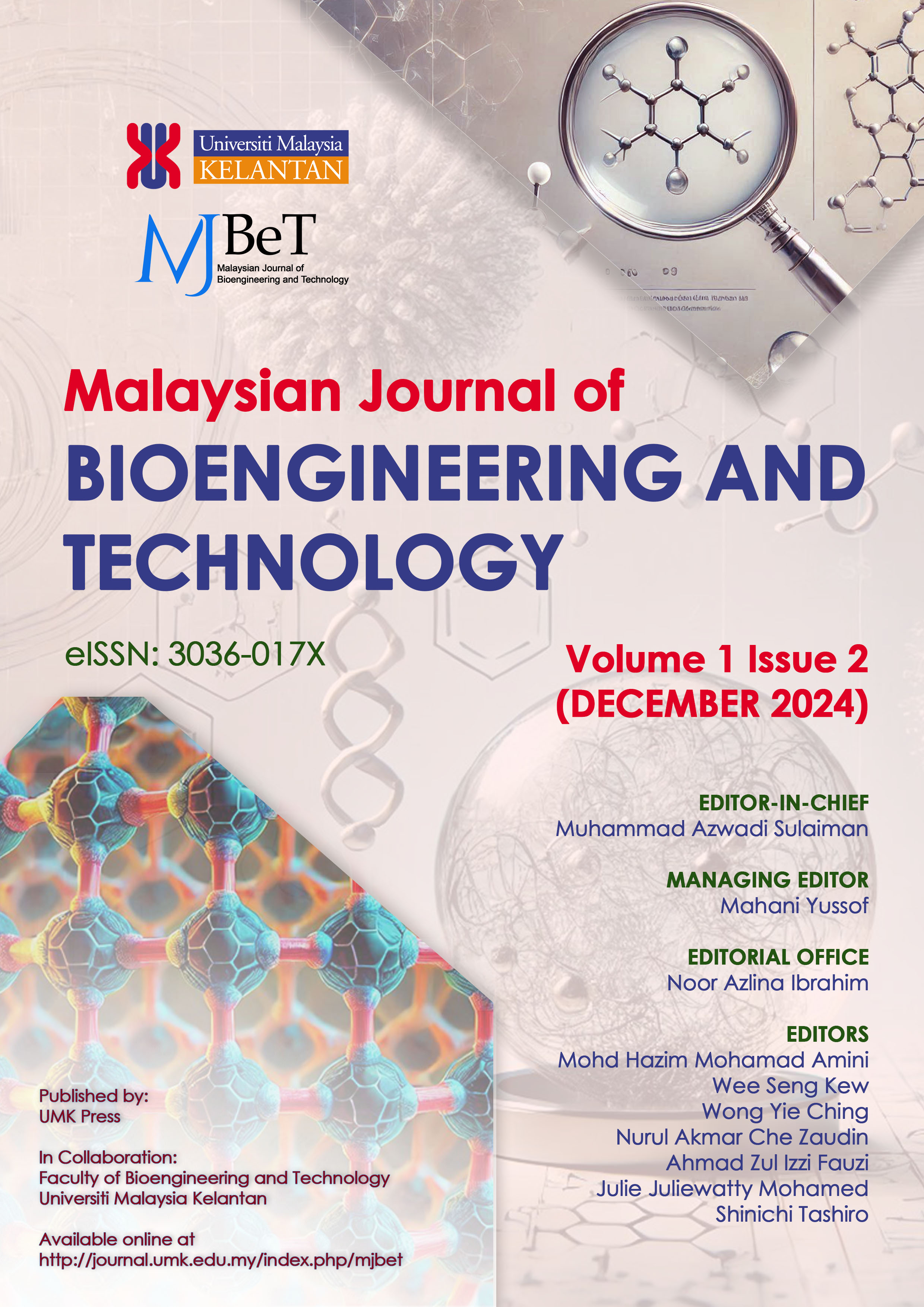Effect of Silver Complex on Graphene Oxide Alginate (GOAlgAg) for Antibacterial Studies
DOI:
https://doi.org/10.70464/mjbet.v1i2.1475Keywords:
Silver complex, Hummer’s method, inhibition zoneAbstract
The effect of the silver complex on graphene oxide and its antibacterial studies was reported in this work. Graphene oxide (GO) has a high specific surface area and is well-known for being an ideal substrate material for growing silver nanoparticles. The simplified Hummer's method was chosen to prepare GO and Silver nanoparticles (AgNPs), which have been decorated on the surface of GO during the reduction of silver complex solution [Ag(NH3)2OH] in GO aqueous solution. The obtained nanocomposite was analyzed by using Ultraviolet-visible spectrophotometry (UV-Vis) and X-ray diffraction (XRD). The antibacterial performance against Gram-negative bacteria (Escherichia coli) and Gram-positive bacteria (B. subtilis) was investigated using the disk agar diffusion method. The diameter of the inhibition zone indicates the effectiveness of GOAlgAg in preventing these bacteria from growing while displaying the nanocomposite as a promising material for antibacterial-related applications. The best antibacterial properties were found in a sample of 5.0:2.5ml GOAlgAg, which shows the highest inhibition zone, 0.85cm toward Escherichia coli and 1.03cm toward B. subtilis.


